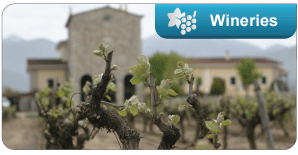Production of Mavrodaphne of Patras
There are two dark grape varieties that can be utilized in the production of Mavrodaphne of Patras (PDO Mavrodaphne of Patras): Mavrodaphne, the eponymous variety that legend has it Gustav Clauss named after his beloved, dark-haired Daphne; and Mavri Korinthiaki—up to 49% of the composition—known for its use in the production of currants. Hailing mainly from the vineyards in the north of the Peloponnese, both varieties are prolific and, regrettably, able to yield a large volume of grapes at the expense of quality. With this in mind, vintners aiming for excellence make sure to keep the yields per acre low and opt for the suitable yet relatively poor soil—marked for its ability to lead to premium wine production—for optimal planting of the variety.
Normally, harvest takes place in the first half of September when Mavrodaphne’s grape skins are resplendent with color and tannins and its small berries are bursting with unrivalled, piquant bitterness, the variety’s trademark. In response, Mavri Korinthiaki juxtaposes its fruit that is high in acidity, poor in tannins, and rich with sugar. The resulting production of Mavrodaphne of Patras involves two varieties that work together to complement each other. The percentage that each variety contributes to the blend is determined by each vintner, some winemakers favoring using Mavrodaphne almost exclusively with other winemakers maximizing the allowed contribution of Mavri Korinthiaki, or 49%. Additionally, some inspired vintners go as far as to dry the berries under the sun (sun-dried, or “liasta,” grapes) or in a shady place in their effort to allow the fruit’s rich aromas and tastes to concentrate even more.
The production of Mavrodaphne of Patras continues with the classic method of vinification of fortified red wines during which alcoholic fermentation is interrupted so that wine-derived alcohol may be added. The process shares a number of traits with the process followed during production of Portuguese Port wine. The sweet, red wine that emerges has all the structure and strength proffered by 15 to 18 percent alcohol by volume as well as all the sweetness that 13 ounces of unfermented sugar per gallon can endow it with. Apart from the quality of the raw material used, production of Mavrodaphne of Patras is equally influenced by the time the wine spends in the barrel, a time that varies from case to case. Still, Mavrodaphne has proven its resilience to time as the huge casks at the winery containing 19th-century Mavrodaphne wines testify!


